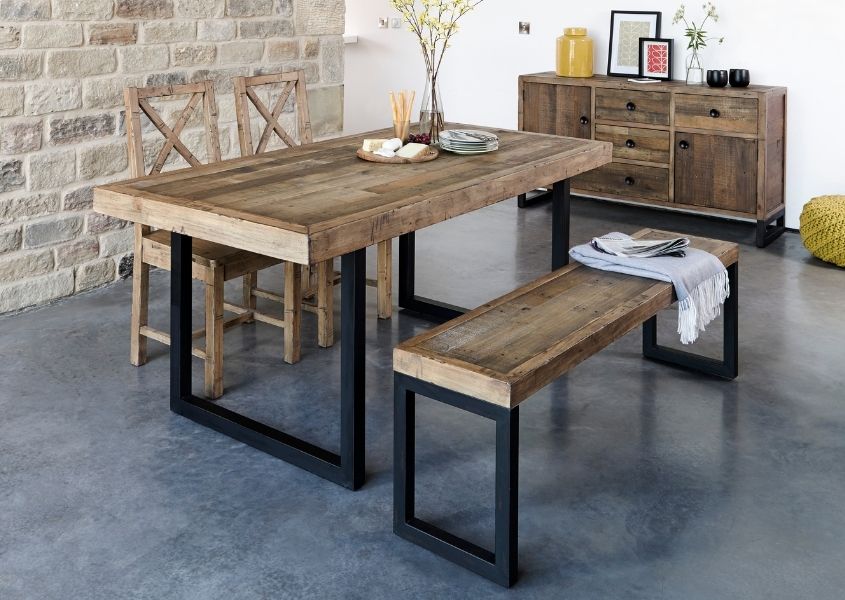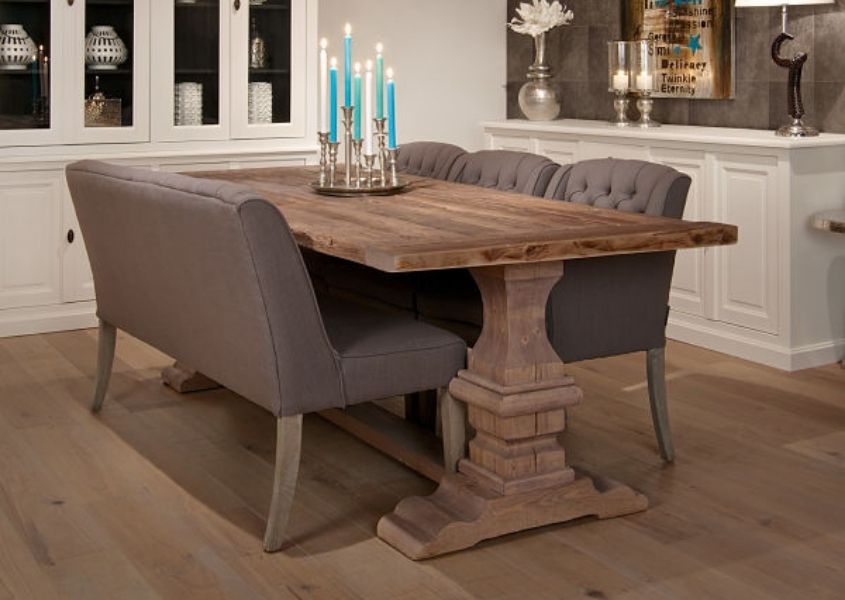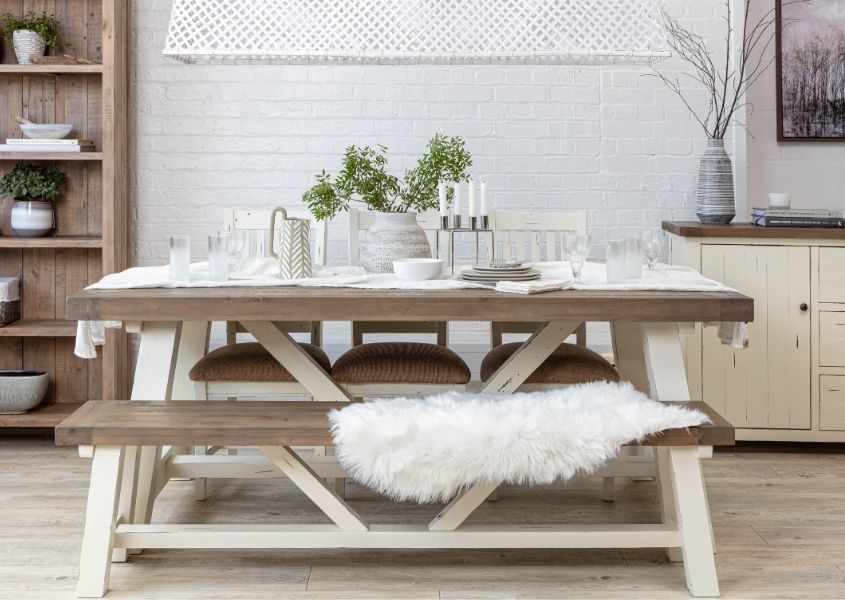
So, you’ve decided to be eco-conscious and invest in a rustic dining table and have started scouring the internet looking at the many different styles available. Confused? Here, we look at the types of legs that you will find featured and a few things to consider to help you make the right purchase for you.
 Photo featuring: Standford Reclaimed Wood Dining Table & Standford Reclaimed Wood Bench
Photo featuring: Standford Reclaimed Wood Dining Table & Standford Reclaimed Wood Bench
Four Legs
Because of the simplicity and focus on functionality, you will often find that an industrial dining table has four simple, fuss-free legs. A table with four legs may not be so easy to fit your chairs around – especially if you have chairs you want to use already. For example, if you have six wooden dining chairs you want to put around a new table – two down each side and one at each end – then you will have to check that the legs will not be in the way when you push the chairs under the table.
Think of it this way, if a 1.8 metre table fits well in your space then the legs could well be inset 20-30cms from each end of the table. Taking the size of the legs into account, you could be left with as little as 1.1 metres usable space down the sides. Yes, this will fit two of the most common sized chairs in, but if you have spacious velvet dining chairs with arms they may keep banging into each other when people get up or sit down. Of course, you can put chairs at each end of the table as long as your dining area has enough room to do this. As a rule, you should allow 1 metre around the whole of your table for moving chairs.

Trestle base
A trestle table is a great option if you want to get extra chairs around the table – they are also very sturdy as the trestle runs all the way down the centre of the table rather than just the corners. You would have a support bar at some height underneath your table which could be an issue for taller people who may bang into this when they are sat at the table. Having said that little children often like this support bar as they rest their feet on it helping them sit more comfortably (and still!) on standard size dining chairs! A trestle table and a wooden bench are a match made in heaven; they just look so great together, and using a bench also allows the trestle base feature to be seen a bit more.
 Photo featuring: Dorset Reclaimed Wood Trestle Dining Table & Dorset Reclaimed Wood Dining Bench
Photo featuring: Dorset Reclaimed Wood Trestle Dining Table & Dorset Reclaimed Wood Dining Bench
Some people may also find it a little harder to vacuum or mop around a trestle base as there’s a bit more to them than just four straight legs.
Pedestal or Spider Leg base
 Photo featuring: Rocco Industrial Rustic Oak Spider Leg Dining Table and Cleo Faux Leather Industrial Dining Bench. For similar chairs see Standford Brown Leather Dining Chairs
Photo featuring: Rocco Industrial Rustic Oak Spider Leg Dining Table and Cleo Faux Leather Industrial Dining Bench. For similar chairs see Standford Brown Leather Dining Chairs
A single pedestal is a classic base for a round dining table and chairs and a large oval table may have two pedestals or a spider leg. Of course, the obvious benefit, as with the trestle base is that you can get more chairs around the table, you can easily move chairs up to add a couple more if you have unexpected guests. If the base of the pedestal is big then you may not be able to push your chairs fully under the table when not in use, so this could be a point to consider if space is tight. If you have spent ages choosing the right pedestal base for you table, it’s worth bearing in mind that you may not be able to see much of it once your chairs are around it.